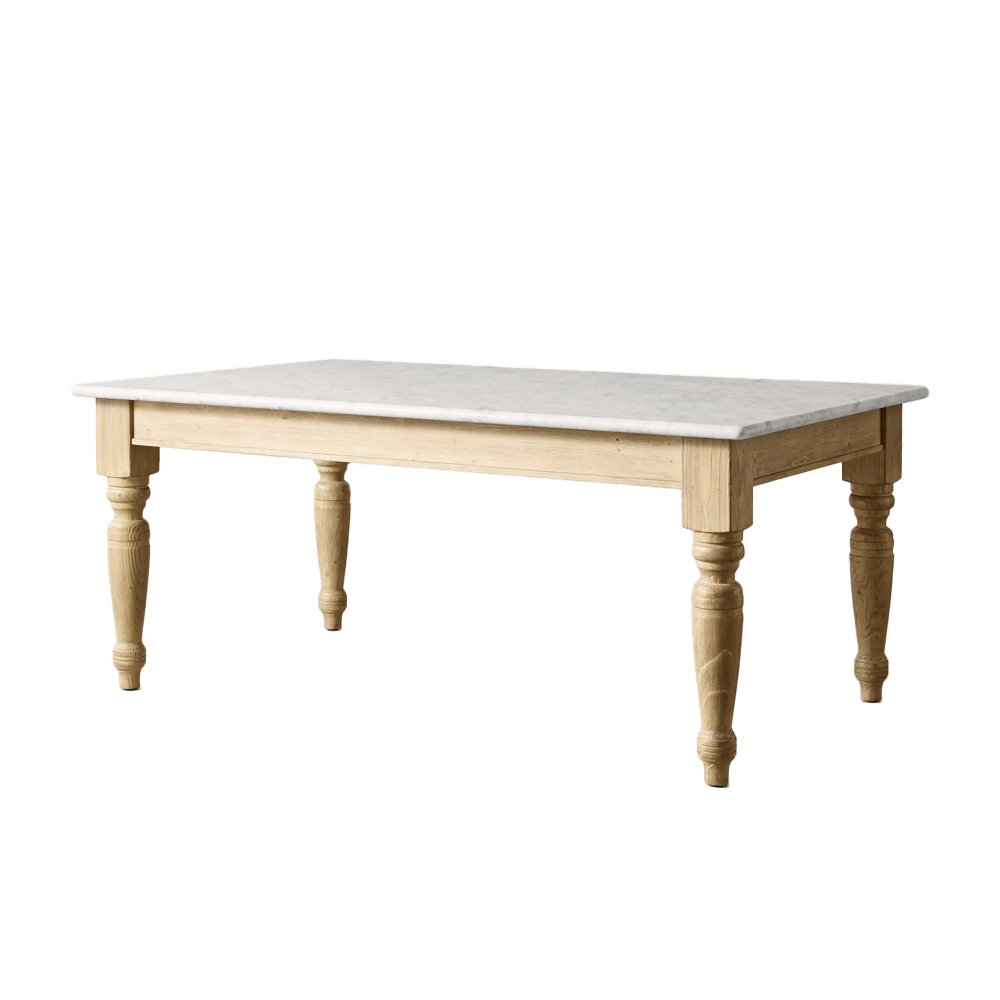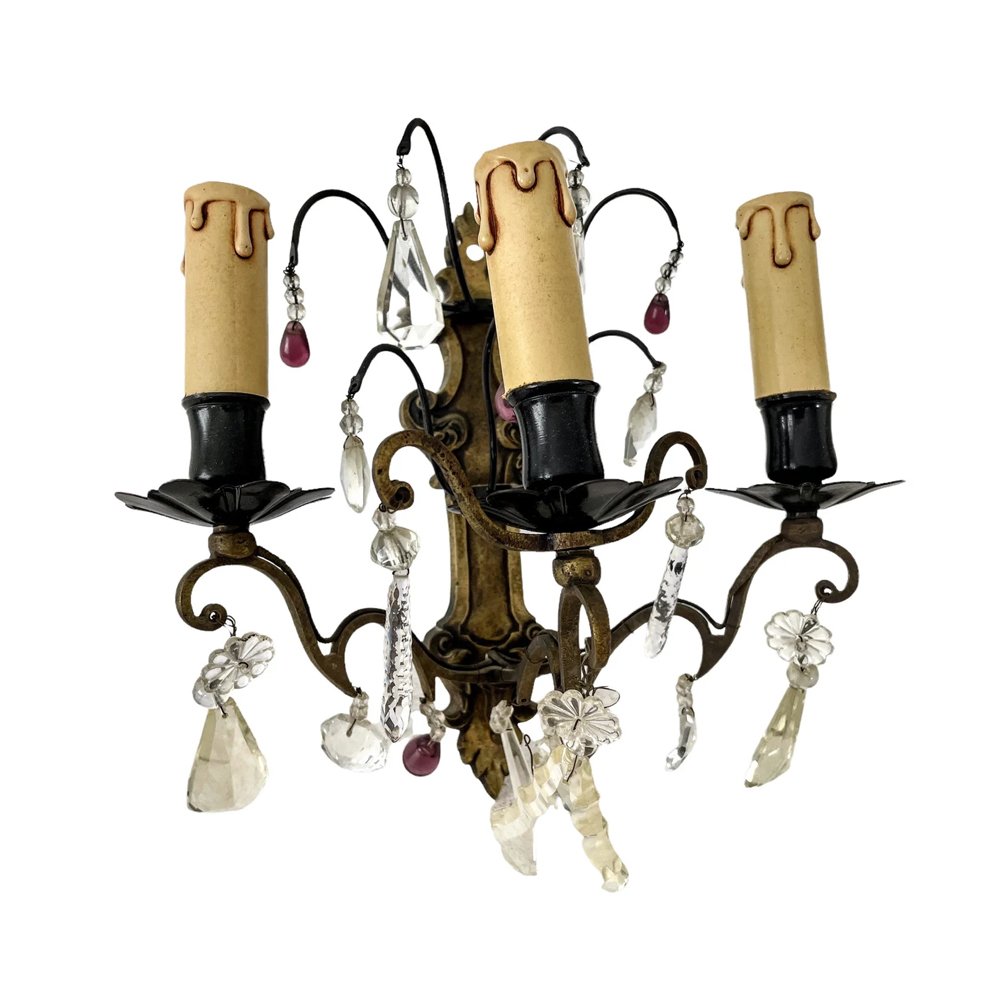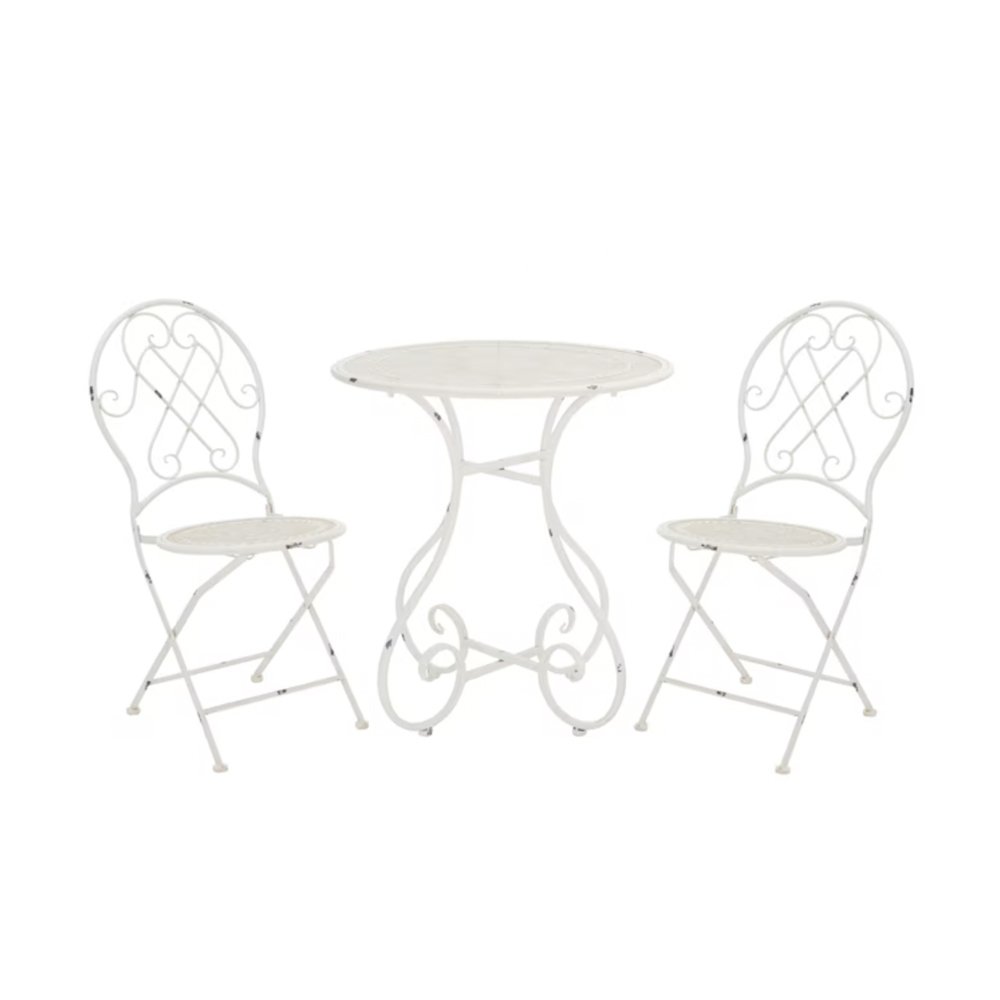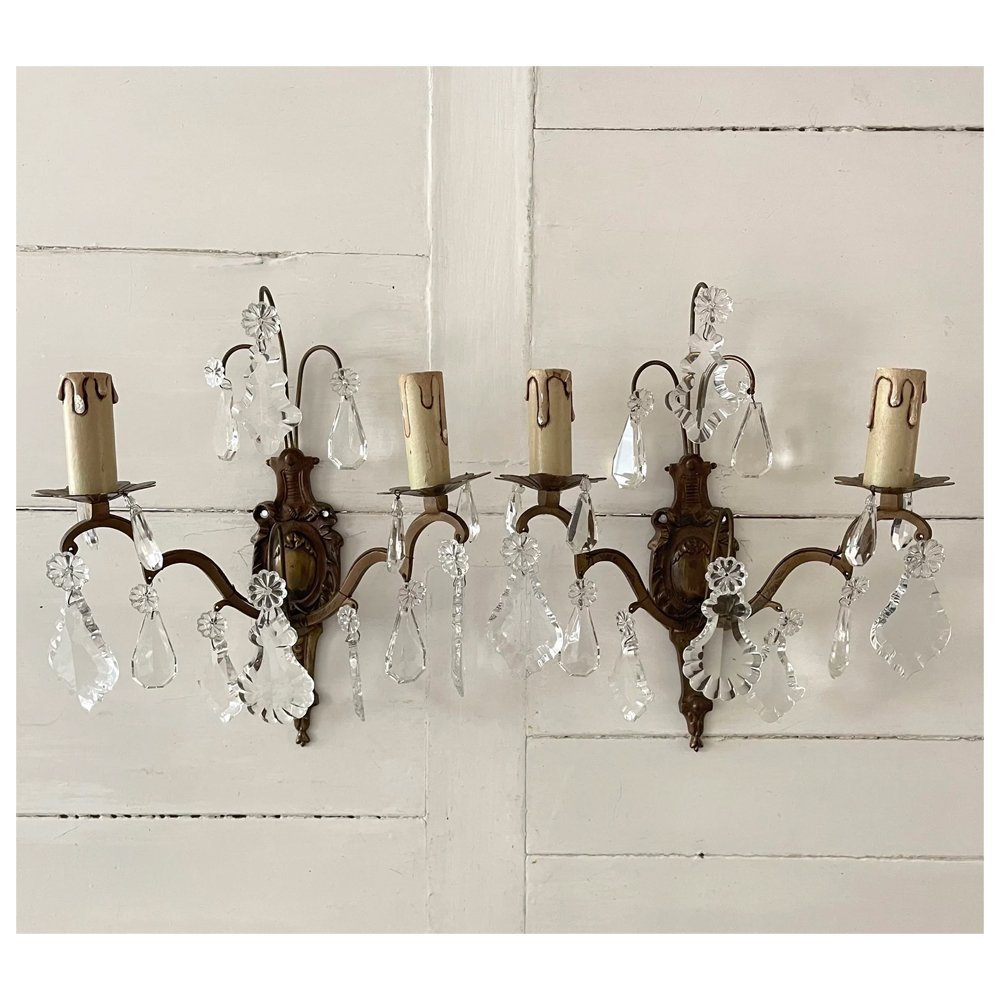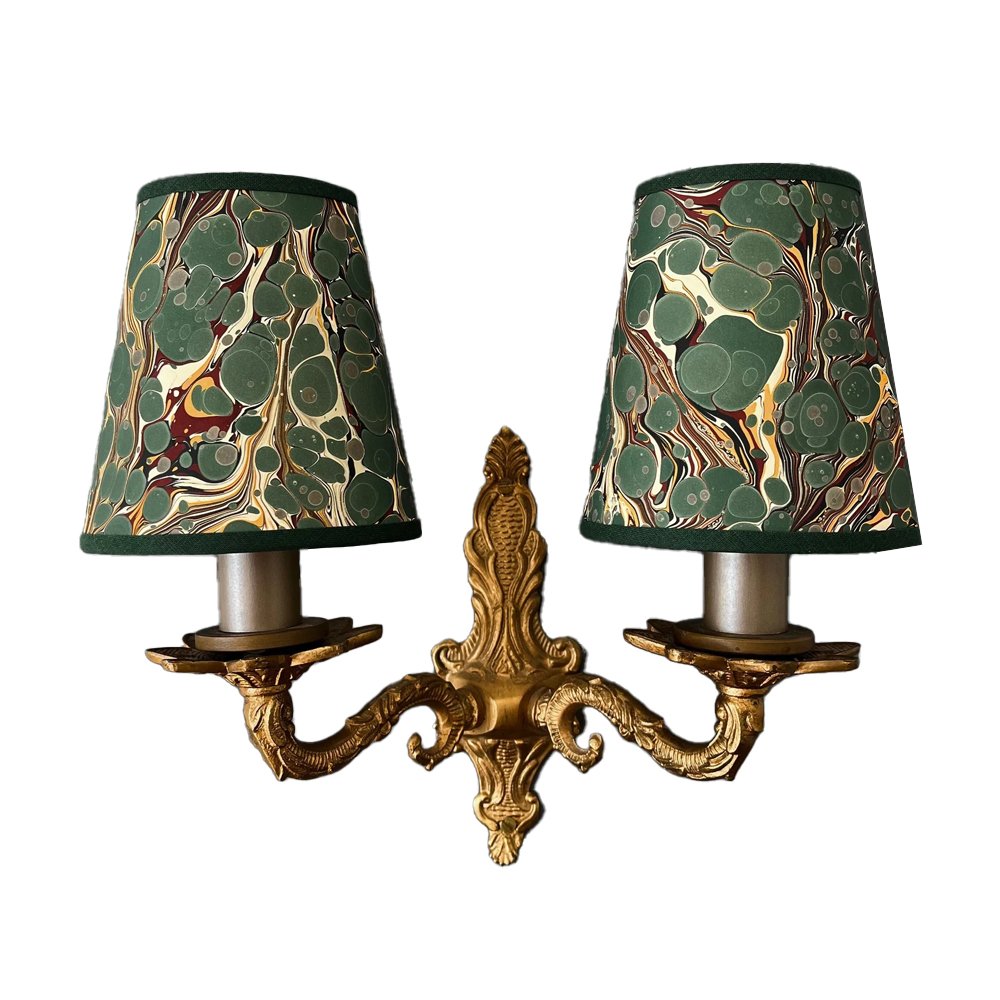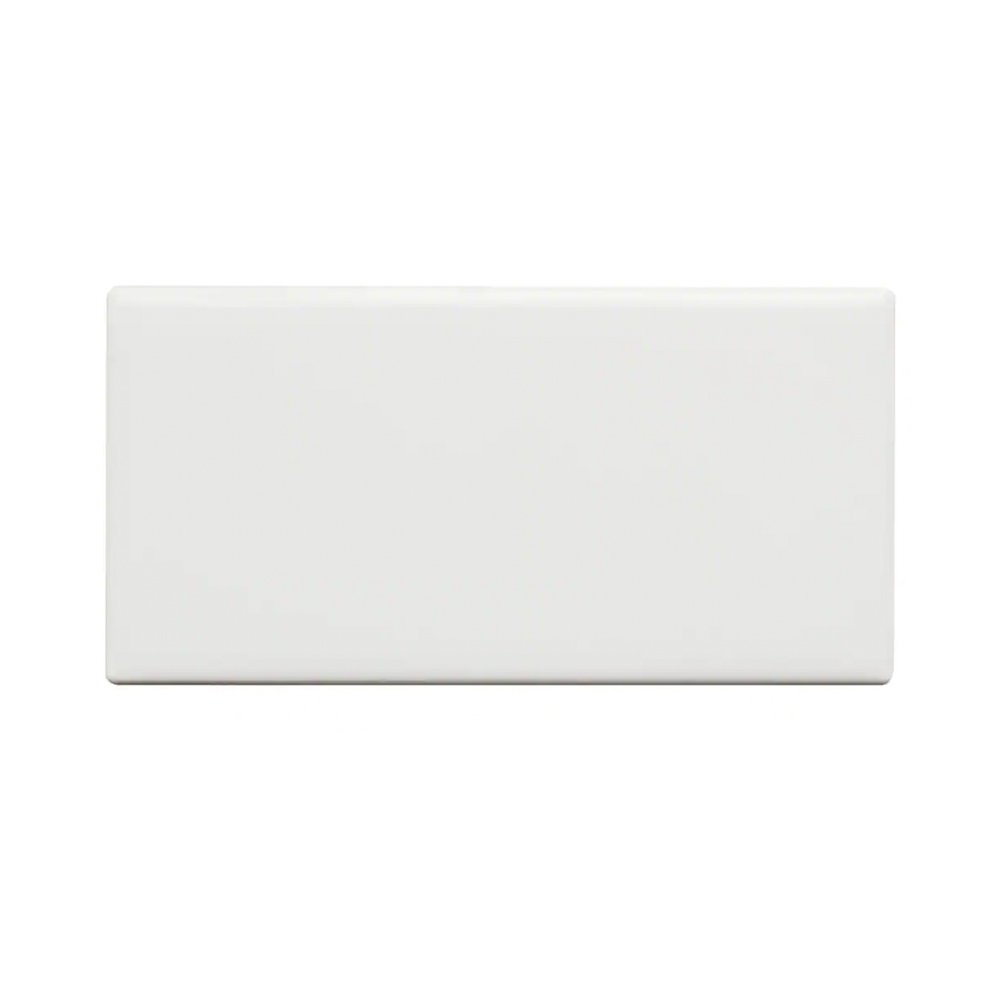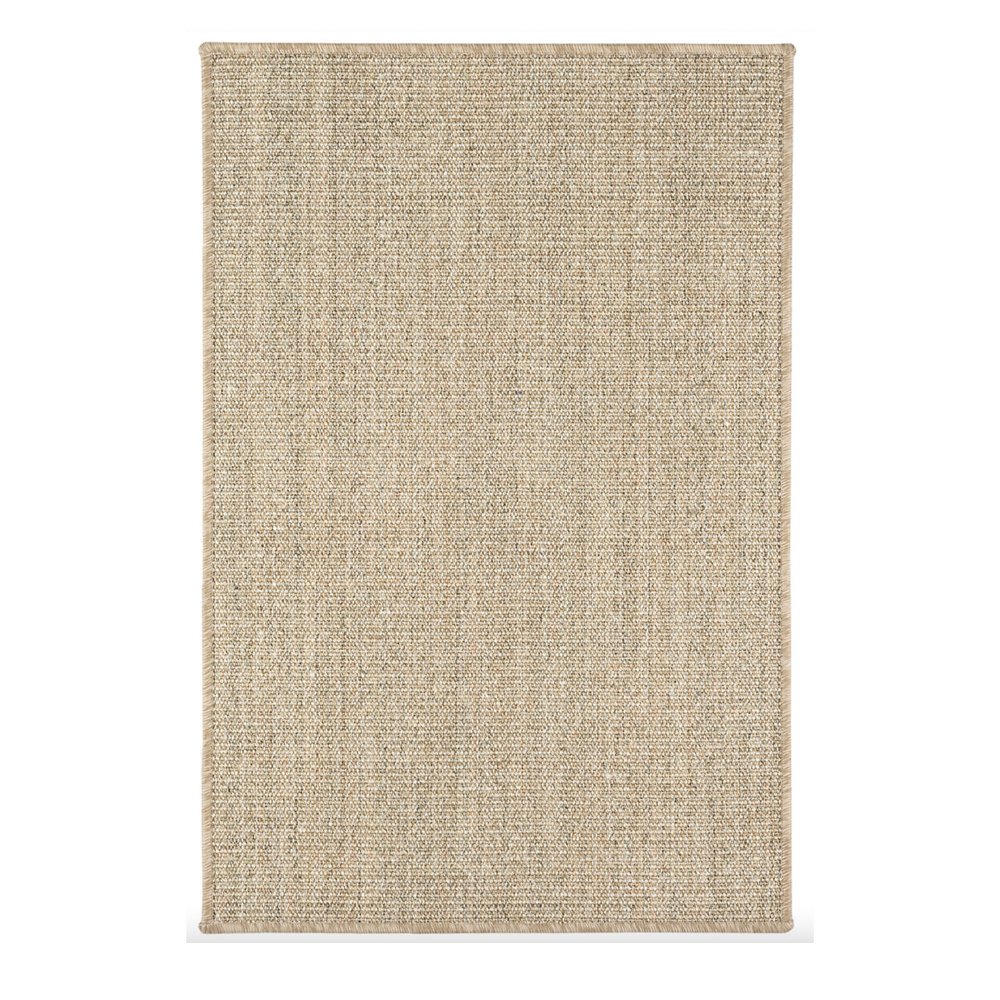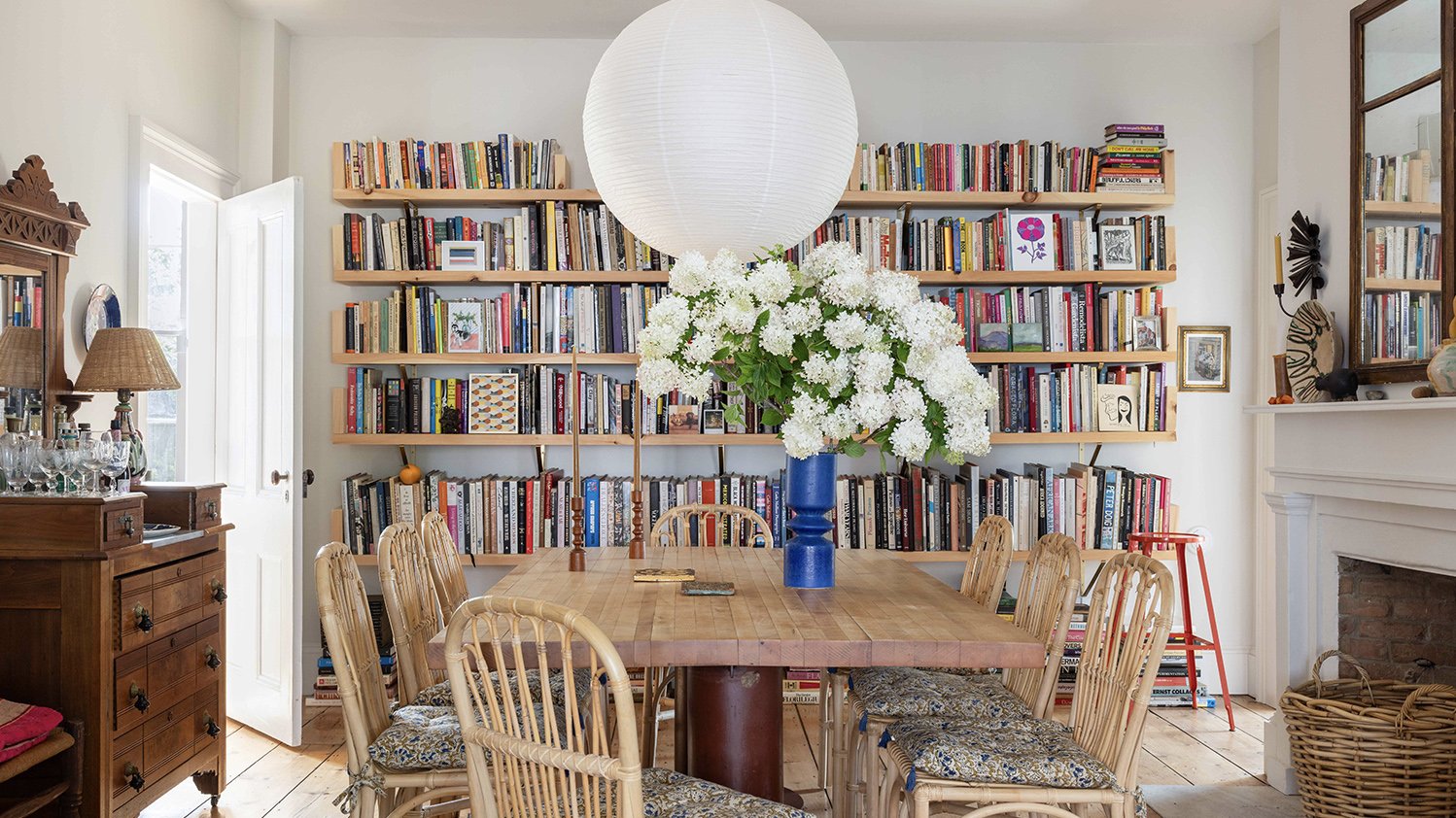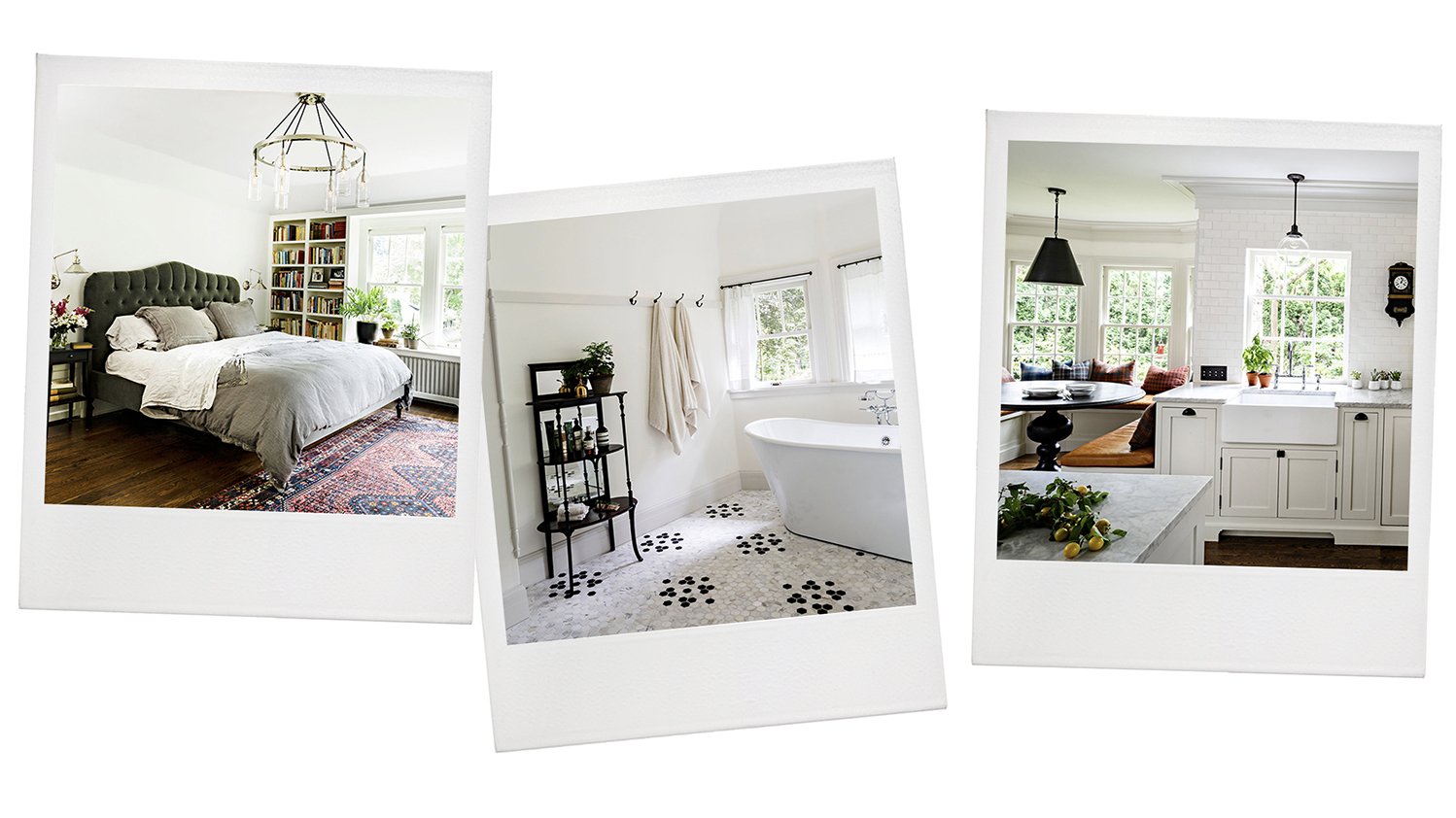Summer Whites: A Breezy Home on the North Fork

The patio's trellis, which is covered in exuberant wisteria vines, was built by a previous owner. White folding chairs from IKEA complement the two vintage iron chairs at the head of the table.
Written by Paola Singer | Photographed by Genevieve Garruppo | Prop Styling by Sarah Jean Shelton
Our product recommendations may include items from our sponsors and/or contain affiliate links, which means we may earn a commission when purchases are made. Rest assured, every item is genuinely chosen by our editorial team.
From Our Archives
A far-flung family finds home base in a 19th-century farmhouse on the North Fork of Long Island.
The breakfast room, which connects to the kitchen, opens onto the leafy patio. Both the vintage wood table, whose top was painted white, and the iron folding chairs were bought in Buenos Aires, where the family previously resided.
Jennifer Webster and Zsolt Juhasz Buday are nothing if not skilled in the art of multitasking. The couple leads an international lifestyle that involves juggling individual and joint projects on different continents. An architect and set designer, Buday met Webster in Budapest, where she was launching a production company in the late ‘90s after leaving her job at a prominent New York City advertising agency. In 2003, the newlyweds bought and refurbished a home in Buenos Aires; to capitalize on their growing experience as renovators, they founded an interior design and architecture firm called the Alchemists. Along the way, they also had two children, Sophie and Felix, with whom they spent several months in Hungary each year.
The framed print is by noted Uruguayan artist Carlos Páez Vilaró; it was found by Webster in a secondhand store in Buenos Aires. The distressed wooden bench is also from B.A.
A decade after moving halfway across the world, the couple was ready for another big life change. “Zsolt is Hungarian, and I’m American,” says Webster. “We wanted to get back to our roots and cultures.” The family decided to spend the school year in Hungary and summers on the East Coast—eventually setting their sights on Greenport, on the North Fork of Long Island. The historic seaside village, with its quaint shops and small-town diners, is a favorite with both vacationers and young families who reside there year-round. “It has a summer scene, but it’s also wholesome and down to earth,” she explains.
The oversize mirror, whose frame was crafted from an old door, is from the couple's former home in Belgrano, a residential area of Buenos Aires. Webster and Buday bought the table from a restaurant that was going out of business in a village called Carlos Keen, about an hour outside of Buenos Aires. The antique crystal chandelier was purchased for $100 at a nameless—but locally famous—shop across the street from Buenos Aires's Mercado de las Pulgas. "The shopowner's name is Irina," says Webster. "You've never seen more chandeliers and lamps. All the stylists go to her."
Webster and Buday were still living in Buenos Aires when they saw a listing for an 1850s farmhouse near the beach. “I fell in love with the south-facing orientation and the big lawn with its massive wisteria,” Webster says. “We bought it over the Internet and didn’t see it until the day of the closing.” This was late 2013, and the months that followed were a whirlwind of activity as they packed their belongings in Argentina while planning double relocations and directing the renovations of a 160-year-old home, mostly from afar. “It was a totally insane period of time,” she admits. The family filled two shipping containers with furniture: one for their apartment in Budapest, and another bound for Long Island.
A printer's type tray is decorated with coastal treasures. "We collected a lot of shells with the kids and glued them in there," says Webster. The white chest, used as a liquor cabinet, was left behind by the previous owners.
When they arrived in Greenport last summer, the work was nearly complete. The basic structure of the four-bedroom residence was preserved, but a few internal walls and doorways were opened to reconfigure the flow of the space. Almost every interior surface, including the wide-plank hardwood floors, was painted white, giving the house a summer-cottage atmosphere. Materials used to renovate the bathrooms and kitchen—also in white—came from retailers such as IKEA and the Home Depot . “I don’t think decorating should be expensive; everything is economically minded in our house,” says Webster.
The spacious living and dining area is decorated with a mix of custom and vintage pieces, most of them shipped from Argentina. The sofa and sectional were made to order and upholstered in white denim. "I put that fabric on everything because it’s durable and you can bleach it!" says Webster. The red painting used to hang on the walls of La Bamba de Areco, a guest ranch in Argentina. The couple liked it so much that they asked to buy it.
An old baker's table found at a Buenos Aires flea market was repurposed as a kitchen island. (The top folds open to reveal big boxes once used to store dough.) The white ceiling lamp is also an antique find.
I don’t think decorating should be expensive; everything is economically minded in our house.
The subway tiles were sourced from Home Depot, and the cabinets and sink are from IKEA.
Several of the furnishings that arrived from South America—a mix of secondhand and made-to-order pieces—are displayed in the spacious living and dining area. One side of the room is anchored by a large rectangular sofa and matching chair covered in white denim, a fabric that Webster has used many times for its durability and washability. There’s also a Louis XV–style chair partially upholstered in an acid-green velvet that Webster isn’t too enamored with (“I think it’s little bit much,” she quips), although it creates a compelling juxtaposition with the large red painting behind it. The vintage dining table nearby, which sits 10, was purchased from a restaurant in a small village outside Buenos Aires. The chairs that surround it were custom-made in Argentina by weaving spaghetti wire onto iron frames.
The polo riding boots belong to Buday. The vintage armoire is from a home they used to own in the Argentine countryside. "It was wobbly and falling apart," says Webster. "When the furniture arrived, the carpenters had to take it apart, move it in, and then put it back together."
The hallway leading to the primary bedroom and bath features a mirror, sconce, and bench from Buenos Aires's Mercado de las Pulgas. Webster reupholstered the bench in a light burlap fabric.
While some of the rooms are ample and airy, others have low, sloping ceilings that required a bit of ingenuity. In the kids’ bedroom, for example, Buday designed cubbyholes to cover an entire wall that was exceedingly squat, thus creating space for three consecutive twin beds. A fourth twin bed is tucked under a small mansard window across the room. “It’s the first time I’ve been involved with a wooden structure,” says Buday. ”Old homes in America are so different than European and South American structures, so it was a really interesting project for me to work on.”
Because of the low, sloping ceiling, the room could barely fit two small beds in its previous incarnation. "A sloping roof is typically dead space because you can't stand up," says Webster. Buday designed these cubby holes to make space for three twin beds (a local carpenter built the structure). On the other side of the room, a fourth twin bed lies below a mansard window.
The renovated guest bathroom has four windows with views of the neighborhood's gardens. "Everybody walks in and loves it," says Webster. The curtain liners are from Target.
The door to the kids' bedroom, located in a section of the house that was built in 1850, is original. The hooks are from IKEA.
Despite their peripatetic lifestyle, the family has easily acclimated to their summers on the North Fork. Sophie and Felix often host sleepovers; they also spend their time going to pool parties, riding bikes around the neighborhood, and playing under the huge wisteria vine that covers the trellis in the one-acre garden. “In terms of raising children, this is an ideal place,” says Webster. “This is our laid-back American experience.”








